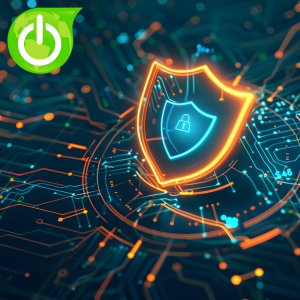 Sometimes the first step in a cyberattack isn’t always a line of code, it’s a single click. One compromised username and password can give attackers full access to your business’s online operations.
Sometimes the first step in a cyberattack isn’t always a line of code, it’s a single click. One compromised username and password can give attackers full access to your business’s online operations.
For small and mid-sized companies, login credentials are often the easiest entry point. According to MasterCard, 46% of small businesses have experienced a cyberattack, and nearly half of all breaches involve stolen passwords. That’s a statistic no business wants to be part of.
Why Login Security Is Your First Line of Defense
Your most valuable assets—client data, product designs, brand reputation—can be compromised in minutes without proper login protection.
The stakes are high:
- 46% of SMBs have faced cyberattacks
- 1 in 5 never recover enough to stay open
- $4.4 million is the global average cost of a data breach
Credentials are easy targets. Hackers steal them via phishing, malware, or breaches at unrelated companies, then sell them on dark web marketplaces for pennies. From there, they don’t need to hack, they just log in.
And while many businesses understand the risk, execution is the challenge. 73% of small business owners say getting employees to follow security policies is a major hurdle. That’s why the solution must go beyond “use better passwords.”
Advanced Strategies to Lock Down Your Business Logins
Strengthen Password and Authentication Policies
- Require unique, complex passwords (15+ characters, mixed symbols).
- Use passphrases—unrelated words that are easy to remember but hard to crack.
- Deploy a password manager to generate and store credentials securely.
- Enforce multi-factor authentication (MFA) using authenticator apps or hardware tokens.
- Regularly rotate passwords and check them against breach databases.
Tip: Don’t leave “less important” accounts unprotected. One weak link can compromise your entire system.
Apply Access Control and Least Privilege
- Limit admin rights to only those who truly need them.
- Separate super admin accounts from daily-use logins.
- Grant third-party vendors minimal access and revoke it immediately when no longer needed.
This minimizes damage if an account is compromised.
Secure Devices, Networks, and Browsers
- Encrypt company laptops and require strong or biometric logins.
- Use mobile security apps for remote staff.
- Lock down Wi-Fi with encryption, hidden SSID, and strong router passwords.
- Keep firewalls active and enable auto-updates for all software.
Think of your devices as the locked building around your login credentials.
Protect Email—The Gateway to Most Attacks
- Enable phishing and malware filters.
- Set up SPF, DKIM, and DMARC to prevent domain spoofing.
- Train employees to verify suspicious requests, especially those involving credentials.
Build a Culture of Security Awareness
- Run short, focused training sessions on phishing, password hygiene, and data handling.
- Share reminders in team chats or meetings.
- Make security a shared responsibility, not just IT’s job.
Prepare for the Inevitable: Incident Response and Monitoring
- Create an incident response plan with clear roles and escalation paths.
- Use vulnerability scanning tools to catch weaknesses early.
- Monitor for credential leaks on breach databases.
- Maintain regular backups and test them often.
Why Password Managers Are a Must-Have
Password managers simplify security without sacrificing convenience. They:
- Generate strong, unique passwords
- Store them in encrypted vaults
- Autofill credentials securely
- Alert users to breached or reused passwords
Popular options include LastPass and 1Password. For businesses, enterprise-grade managers offer centralized control and policy enforcement.
Make Your Logins a Security Asset
Login security can be your weakest link or your strongest defense. By layering protection through MFA, access control, device security, and employee training, you make it exponentially harder for attackers to succeed.
Start small. Fix the weakest link; maybe an old, shared admin password or a missing MFA setup. Then move to the next. Over time, these steps build a resilient, adaptive defense.
Contact us today to turn your login process into one of your most powerful cybersecurity tools.
